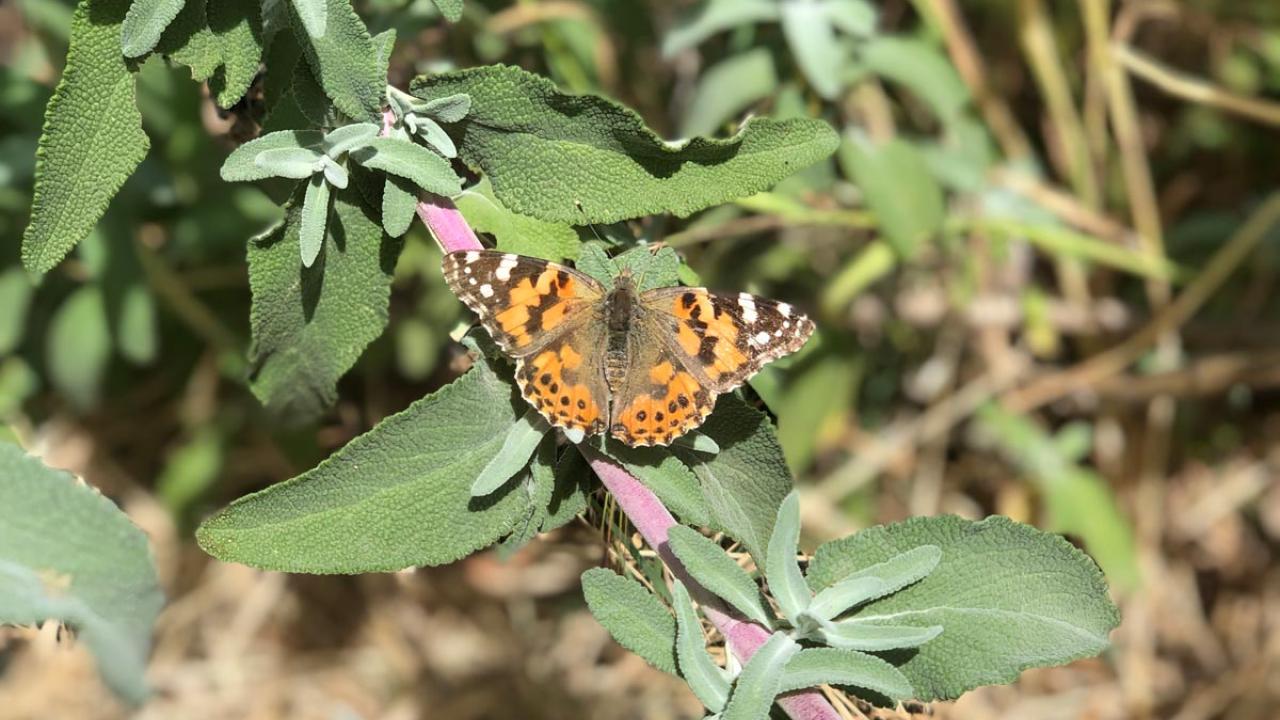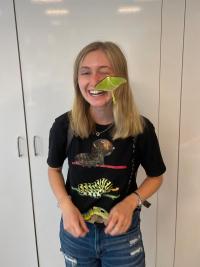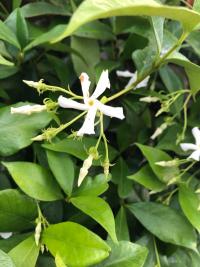
UC Davis Doctoral Student Hosts BioBlitz Nature Event
Community members invited to observe insects, plants and wildlife
Sometimes it’s easy to spot the iconic Monarch butterfly perched on a thick leaf of a milkweed plant. But there are other species of wildlife living in our backyard that aren’t as easy to find.

Grace Horne, a Ph.D. student in entomology, is hoping community members will join her at the upcoming BioBlitz event she helped organize to track and identify various insects, plants and animals living in the region. The free event is scheduled for Saturday, April 29 from 9 to 11 a.m. at the Wyatt Deck in the UC Davis Arboretum and Public Garden.
Participants are asked to look for any living organism, take photos of what they find and upload their observations to the iNaturalist website or smartphone app. It’s open to everyone; no experience necessary.
Horne, who studies interactions between butterflies and moths with plants, said the idea is that community members will not only learn more about the wildlife that surrounds them, but they’ll be contributing to a biodiversity database that could help researchers in the future.
“My ultimate goal for the event is to inspire people to look at their backyards differently,” Horne said. “I’m hopeful that this will be a call to attention for people to look closer at the plants and animals around them.”
Global effort
This local BioBlitz event is in collaboration with the City Nature Challenge, an annual competition held around the world to document the most biodiversity within a four-day period, which this year is from April 28 to May 1. Horne, who was recently selected to the National Science Foundation’s Graduate Research Fellowship program, expects people will spot several native California plants, as well as important insects like bees and butterflies.
“Insects support a lot of ecosystem services like pollination and nutrient cycling, so they’re really integral components of the environment,” she said.

Horne said there will be materials like small, hand-held lenses and field guides to help participants identify what they see. There will also be experts who can assist in identifying species. Horne said the community science activity will hopefully open people’s eyes to the smaller elements of the environment that sometimes are overlooked.
“I think the medium of photography is awesome because you can take a picture of a metallic-looking bee, one that you may not have looked at close enough, and see it has this beautiful blue color,” she said.
Growing up in New Hampshire, Horne enjoyed learning about the plants, trees and wildlife that surrounded her. As an undergrad, she participated in a BioBlitz event held in Montpelier, Vermont in 2019. It was a valuable experience for her; one that she hopes will similarly inspire others locally to explore the great outdoors a little more.
“This event is great for uncovering what’s going on in your environment and inspiring people to look closer and maybe think more about conservation,” she said.
Media Resources
- Grace Horne, Department of Entomology and Nematology, gmhorne@ucdavis.edu
- Tiffany Dobbyn, College of Agricultural and Environmental Sciences, tadobbyn@ucdavis.edu